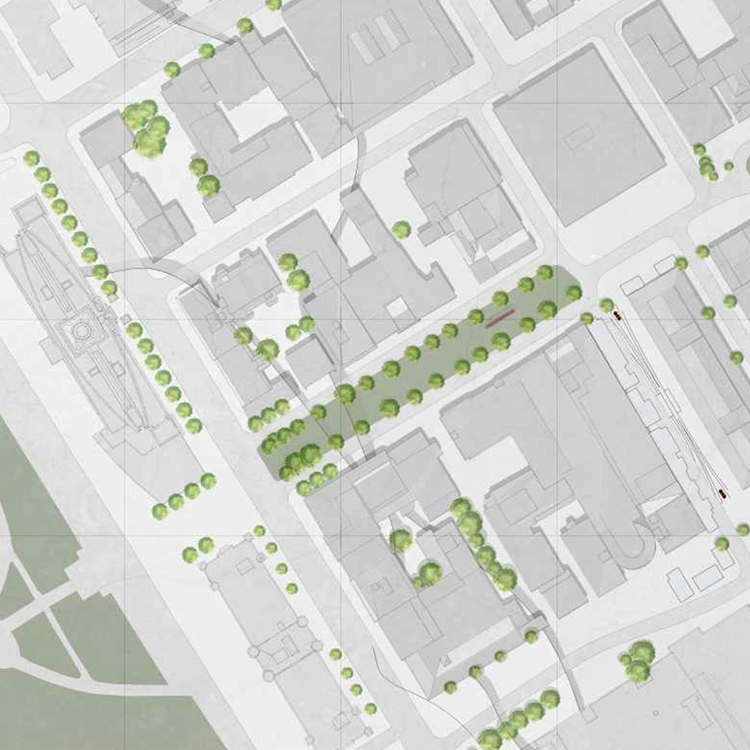Designing 15-minute neighbourhoods in a post-COVID Ottawa

Ottawa aspires to be one of the best livable mid-sized cities in North America. A key part of this vision includes vibrant traditional main streets supporting both speciality and everyday items: think of a butcher, bagel shop or bakery that are within a short walk. Add a pharmacy and services such as dentists, doctors and accountants, and you have a complete community.
COVID-19 is putting many of these small businesses under significant pressure. Even as the economy reopens, merchants are facing difficult questions. How do stores protect their staff, but still let people in to browse, try on clothing or do their grocery shopping? How do they create an enticing experience when many of their customers are leery of leaving the house and are growing accustomed to online shopping?
Some merchants, and their local business improvement associations, believe the key is parking. Granted, some residents currently have fears around using public transit. But the answer isn’t to have more people driving. That is dangerous thinking for a post-COVID world.
We need more people walking and biking, being healthy and safe, to both aid our economic recovery and continue making our city more liveable. More bikeable and walkable communities create better economic growth for businesses.
One of the keys to business growth is ensuring a steady supply of customers. What better way to do that than to build more housing close to them?
Popsicle tests and food deserts
In urban planning, a good tool to test the walkability of a community is the “popsicle test.” The theory is that your kid should be able to go to the store safely to purchase a popsicle and return home before it melts.
In many parts of Ottawa, attempting this test raises a host of uncomfortable questions. Are our streets safe enough for a child to walk alone to a corner store? Is there even a corner store for them to shop at?
Here’s a related hurdle to creating complete, walkable communities: food deserts, or places where there are no grocery stores in a neighbourhood and everyone is forced to drive to meet their basic needs.
A recent observation on Twitter highlighted this challenge in the growing area west of downtown:
If you look to this area of #Ottawa north of Scott, there is not a single grocery store, convenience store, anything. Yes there is limited access when you go south of Scott but there are 3 more large apartment towers coming online. The one in tunneys is in a total desert pic.twitter.com/qWm10pr7Z0
— The Name Is Gabe (@gabesimages) May 11, 2020
How do the thousands of people in this area meet their basic needs without a car?
Building more missing middle housing is essential to sustainable growth. Communities such as the Glebe, Old Ottawa South, Centretown and Wellington West are often zoned specifically for this type of development. For each 65-metre block of vacant or underutilized land on a traditional main street, as much as 20,000 square feet of small businesses, 20,000 square feet of offices and 50,000 square feet of housing could be built “as of right” in a series of six-storey buildings. That translates to 30 to 40 homes on each block, with each home supporting dozens of small businesses in their community.
From Somerset at Elgin to Wellington at Broadview is a 6.5-kilomere stretch that could have 200 times this development in modest intensification. That translates into 8,000 homes along this one street alone. Extend that over the many traditional main streets in our city and we truly start to be the city we aspire to.
For the city’s part, municipal officials can work with retailers to establish supportive policies for deliveries, garbage pickup and recycling to minimize the complexities of building separate capital-intensive infrastructure for each store. Parking can be eliminated or minimized, creating a healthier community that relies on active transportation and public transit. And good parks, libraries, health clinics and other public services can be integrated within these communities.
As we collectively work to limit the spread of COVID-19, many of us are appreciating how we must forge community around basic human needs for social interaction. Urban neuroscientist Robin Mazumder recently shared his observations about the toll that isolation can take on some individuals and the need to consider our mental and emotional health in our response to the pandemic. Small businesses in a walkable community provide a necessary social interaction for people and are key to a healthy society.
COVID-19 is underscoring the importance of small businesses to the health of a neighbourhood. Walkable communities are this city’s goal. A post-COVID Ottawa needs to recognize both of these and take deliberate action to create the vibrant, healthy city we aspire to be. That means fewer people in cars and the ability to go outside, connect with our neighbours and forge community.
Architect Toon Dreessen is President of Architects DCA and former president of The Ontario Association of Architects. For samples of our previous work, explore our portfolio